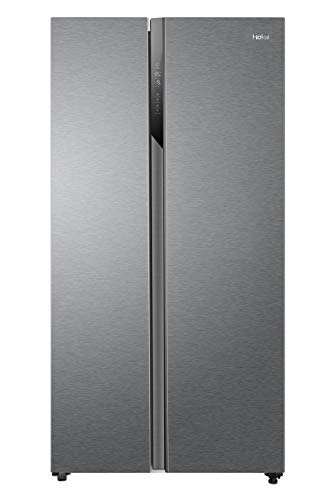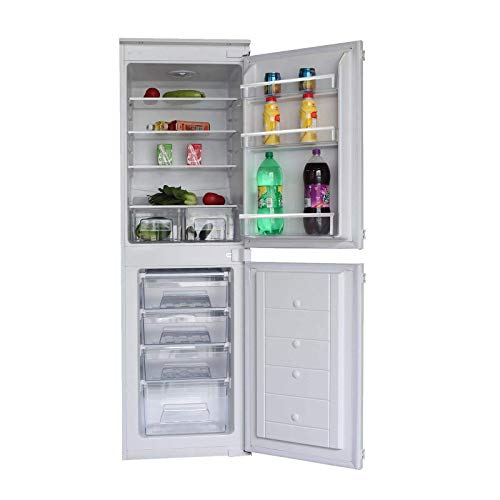
Freezers Uk
Add a review FollowOverview
-
Founded Date June 25, 1955
-
Sectors Electric motor mechanic
-
Posted Jobs 0
-
Viewed 69
Company Description
3 Common Reasons Why Your Fridge UK Isn’t Working (And How To Fix It)
The Comprehensive Guide to Refrigerators in the UK
Fridges are an essential device in every household, serving an essential role in food preservation and safety. The UK market provides a diverse series of fridge types, sizes, functions, and brand names. This short article aims to provide an extensive understanding of fridges for sale uk available in the UK, including their functions, energy effectiveness, and factors to think about when purchasing.

Kinds Of Refrigerators Available in the UK
When trying to find a refrigerator, it is important to comprehend the different types offered. Each type comes with its own set of functions and functions, catering to different needs and choices. The most common types of refrigerators discovered in the UK consist of:
1. Top Freezer Refrigerators
- Description: The traditional style, featuring the freezer compartment on top.
- Pros: More inexpensive, spacious, easy access to fresh food.
- Cons: Limited freezer space, the top may be less practical for bulk products.
2. Bottom Freezer Refrigerators
- Description: Freezer is located at the bottom, enabling much easier access to fresh food.
- Pros: Greater benefit, much better visibility of fresh items.
- Cons: Usually more costly, some may have problem with large frozen products.
3. Side-by-Side Refrigerators
- Description: Features two vertical compartments, one for the fridge and one for the freezer.
- Pros: Ample storage area, simple to access both frozen and fresh foods.
- Cons: Wider footprint, they might not fit in smaller sized kitchen areas.
4. French Door Refrigerators
- Description: Combines functions of bottom freezers and side-by-sides, with 2 doors for the fridge on top.
- Pros: Stylish design, roomy, and typically consists of sophisticated functions.
- Cons: Higher rate point, aligns badly with smaller sized kitchen area layouts.
5. Compact Refrigerators
- Description: Smaller models developed for restricted spaces.
- Pros: Ideal for studio apartments or workplaces, energy-efficient.
- Cons: Limited storage capacity, may lack functions.
6. Integrated Refrigerators
- Description: Designed to mix flawlessly with kitchen cabinets.
- Pros: Custom fit, visual appeal, increases home value.
- Cons: Higher expense, might provide less versatility in placement.
7. Smart Refrigerators
- Description: Equipped with Wi-Fi and clever technology features.
- Pros: Advanced features like touch screens and internal cams.
- Cons: Expensive, more complicated to fix.
| Refrigerator Type | Ease of access | Average Price Range | Energy Efficiency |
|---|---|---|---|
| Leading Freezer | Moderate | ₤ 300 – ₤ 600 | Typical |
| Bottom Freezer | High | ₤ 400 – ₤ 800 | Above Average |
| Side-by-Side | Easy | ₤ 800 – ₤ 1500 | Differs |
| French Door | High | ₤ 800 – ₤ 2000 | High |
| Compact | Limited | ₤ 200 – ₤ 500 | Average |
| Integrated | Custom-made | ₤ 1000 – ₤ 2500 | High |
| Smart | Variable | ₤ 1200+ | High |
Secret Features to Consider
- Energy Efficiency: Look for models that are energy-efficient. In the UK, devices are rated from A (most efficient) to G (least effective). An A+ score and above can result in significant energy savings.
- Capacity: Choose a fridge with sufficient capability for your family. A standard guideline is 100-200 liters per individual.
- Sound Level: Consider models that operate quietly, especially if the cooking area is near living spaces.
- Cooling Technology: Features like frost-free innovation deserve the financial investment, as they reduce upkeep.
- Adjustable Shelves: Having adjustable racks boosts the flexibility to store larger items.
- Temperature level Control: Check for user friendly temperature level controls and zones for different kinds of food.
- Design: Choose the style and color that matches your kitchen area aesthetic, whether you choose a modern stainless-steel look or a traditional retro surface.
Purchasing Tips
- Determine Your Needs: Consider your cooking routines, household size, and kitchen area area.
- Set a Budget: Refrigerators come in numerous price varieties. Develop a spending plan before you begin shopping.
- Research Study Energy Ratings: Invest in energy-efficient designs to minimize utility bills.
- Read Reviews: User experiences can offer insights into dependability and efficiency.
- Compare Brands: Some brand names are understood for their resilience while others might provide more innovative functions.
Frequently Asked Questions (FAQs)
1. The length of time do fridges usually last?
- Refrigerators normally last between 10 to 20 years, depending on the brand name and how well they are maintained.
2. Are there any upkeep suggestions for lengthening the life of a refrigerator?
- Routinely tidy the coils, inspect the door seals, and occasionally defrost if required to keep optimal efficiency.
3. What is the best size refrigerator for a household of 4?
- For a household of four, a refrigerator with a capacity of around 400-600 liters is usually enough.
4. Do I need to stress over energy intake when purchasing a refrigerator?
- Yes, energy consumption is necessary. Look for units with high energy performance rankings to reduce regular monthly expenses.
5. Should I choose a fridge with a water and ice dispenser?
- This feature can be hassle-free, particularly for families. Nevertheless, it may require more upkeep than standard models.
Buying a refrigerator is a considerable decision for any family in the UK. With numerous types offered, each with its special features and benefits, it is crucial to evaluate individual needs before making a choice. By considering aspects such as energy efficiency, capacity, and design looks, consumers can select a fridge that lines up well with their lifestyle, ultimately improving their kitchen area experience while safeguarding food quality and freshness.



